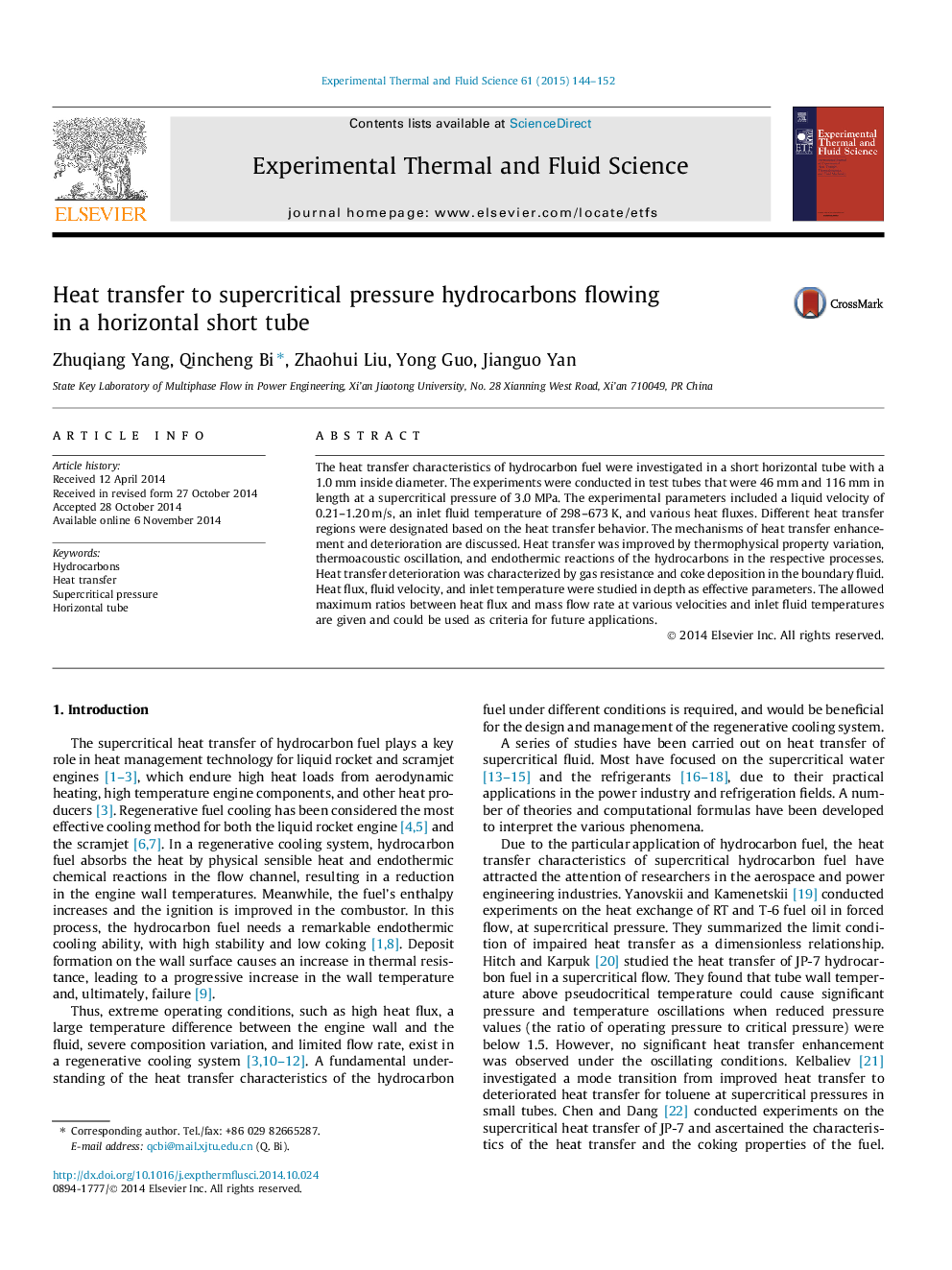| Article ID | Journal | Published Year | Pages | File Type |
|---|---|---|---|---|
| 7052320 | Experimental Thermal and Fluid Science | 2015 | 9 Pages |
Abstract
The heat transfer characteristics of hydrocarbon fuel were investigated in a short horizontal tube with a 1.0Â mm inside diameter. The experiments were conducted in test tubes that were 46Â mm and 116Â mm in length at a supercritical pressure of 3.0Â MPa. The experimental parameters included a liquid velocity of 0.21-1.20Â m/s, an inlet fluid temperature of 298-673Â K, and various heat fluxes. Different heat transfer regions were designated based on the heat transfer behavior. The mechanisms of heat transfer enhancement and deterioration are discussed. Heat transfer was improved by thermophysical property variation, thermoacoustic oscillation, and endothermic reactions of the hydrocarbons in the respective processes. Heat transfer deterioration was characterized by gas resistance and coke deposition in the boundary fluid. Heat flux, fluid velocity, and inlet temperature were studied in depth as effective parameters. The allowed maximum ratios between heat flux and mass flow rate at various velocities and inlet fluid temperatures are given and could be used as criteria for future applications.
Related Topics
Physical Sciences and Engineering
Chemical Engineering
Fluid Flow and Transfer Processes
Authors
Zhuqiang Yang, Qincheng Bi, Zhaohui Liu, Yong Guo, Jianguo Yan,
